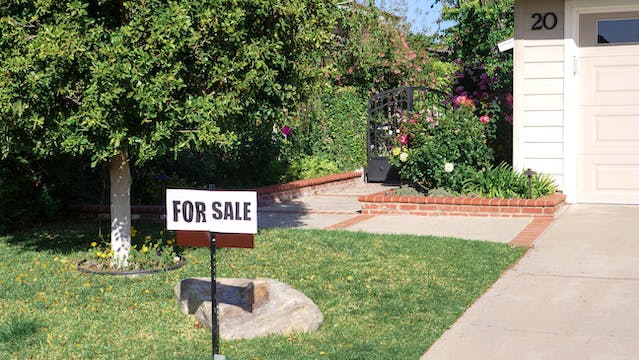
What is a subprime mortgage? It is a mortgage given to someone with a low credit rating who is thought to be a risk of non-repayment. They have more risk for banks, so they have much higher interest rates.
As an interesting aside, the word “mortgage” comes from the old French “mort”, which meant “death” and “gaige”, which meant “pledge”. It was a death pledge, but it didn’t mean the death of the person. The word death was used to refer to the ending of the pledge. The pledge died when the debt was repaid or when the property was repossessed.
Banks look at several things when they decide whether to give someone a mortgage or not. They look at the value of the house, the income of the applicant, the credit rating of the person, and the size of any down-payment. They also look at whether the person has defaulted on payments before. Mortgages are ranked from A down to F, with A being the best and F being people who don’t appear to have any way to repay the loan. A and B mortgages are prime mortgages. “Prime” means something that is of very high quality and the A and B mortgages are of very high quality. They are safe and the people who get them very rarely default. For this reason, they are given relatively low interest rates. On the other hand, the mortgages that are ranked C to F are below the prime level, or subprime. These people are very likely to default, so banks give them very high interest rates. The bank is taking on a lot of risk, so they use high interest rates to compensate themselves for that risk.
Subprime loans don’t have to be mortgages. Any loan where the person borrowing money is thought to be a risk of default is a subprime loan. Payday loans are a good example of this. Payday loans are an option for people who have run out of money before their next paycheck arrives. A payday lender will lend a portion of the person’s upcoming paycheck without checking the person’s credit history or whether they can repay the loan or not. Because of this, they charge incredibly high fees and interest rates. The person has to pay back the loan and the interest when they get their next paycheck, which causes the problem to repeat because they won’t have enough money again. Payday loans are a debt trap that people cannot get out of.
We all heard the expression subprime mortgage in 2008 during the world financial crisis. This happened because banks started to lend money to people that had no way of repaying the money without checking their financial history or their credit history. The US housing market was strong and house prices were going up. Many people borrowed money to flip houses and a lot of these people used subprime mortgages. The banks thought that because house prices were going up there was no real risk. Then, of course, house prices stopped going up and a lot of people could not resell their houses. Many people defaulted on subprime mortgages at the same time.
The problem might have been contained if it was just people defaulting on subprime mortgages. The situation brought down many banks and institutions because of two reasons. Firstly, banks had borrowed heavily to finance these subprime mortgages that they had convinced themselves were safe and a good source of income. Secondly, they had sold these subprime mortgages on to investors.
It is common practice for investors to buy mortgages from banks. They are a good source of income because people usually pay back their loans. Investors don’t like risk, so they like to buy the A and B ranked prime mortgages. In the run up to the 2008 crisis, banks had started to bundle mortgages together in packages called mortgage-backed securities (MBS). These MBSs were a mix of prime mortgages and subprime mortgages. As time went by, there were more subprime than prime in the packages, but the banks labelled them as “safe”. Then house prices stopped rising and people started to default on the loans. The banks and the investors repossessed the houses, but house prices were dropping and they couldn’t sell them for the price of the mortgage. They incurred huge losses and they couldn’t repay their own debts. Investors pulled their money out of banks, and many institutions began to collapse. All because of subprime mortgages. And this is what I learned today.
Photo by Kindel Media: https://www.pexels.com/photo/for-sale-sign-on-green-grass-lawn-7578849/
Sources
https://www.rba.gov.au/education/resources/explainers/the-global-financial-crisis.html
https://www.investopedia.com/terms/s/subprime_mortgage.asp
https://www.investopedia.com/terms/p/prime.asp
https://www.etymonline.com/word/mortgage
https://en.wikipedia.org/wiki/Mortgage
https://blend.com/blog/thought-leadership/origin-stories-mortgage/
https://www.investopedia.com/terms/p/payday-loans.asp
